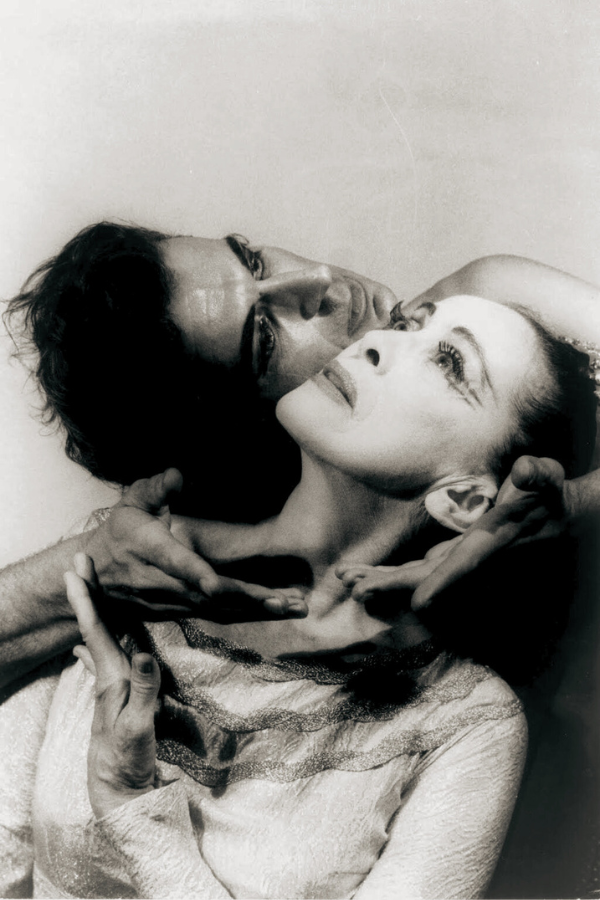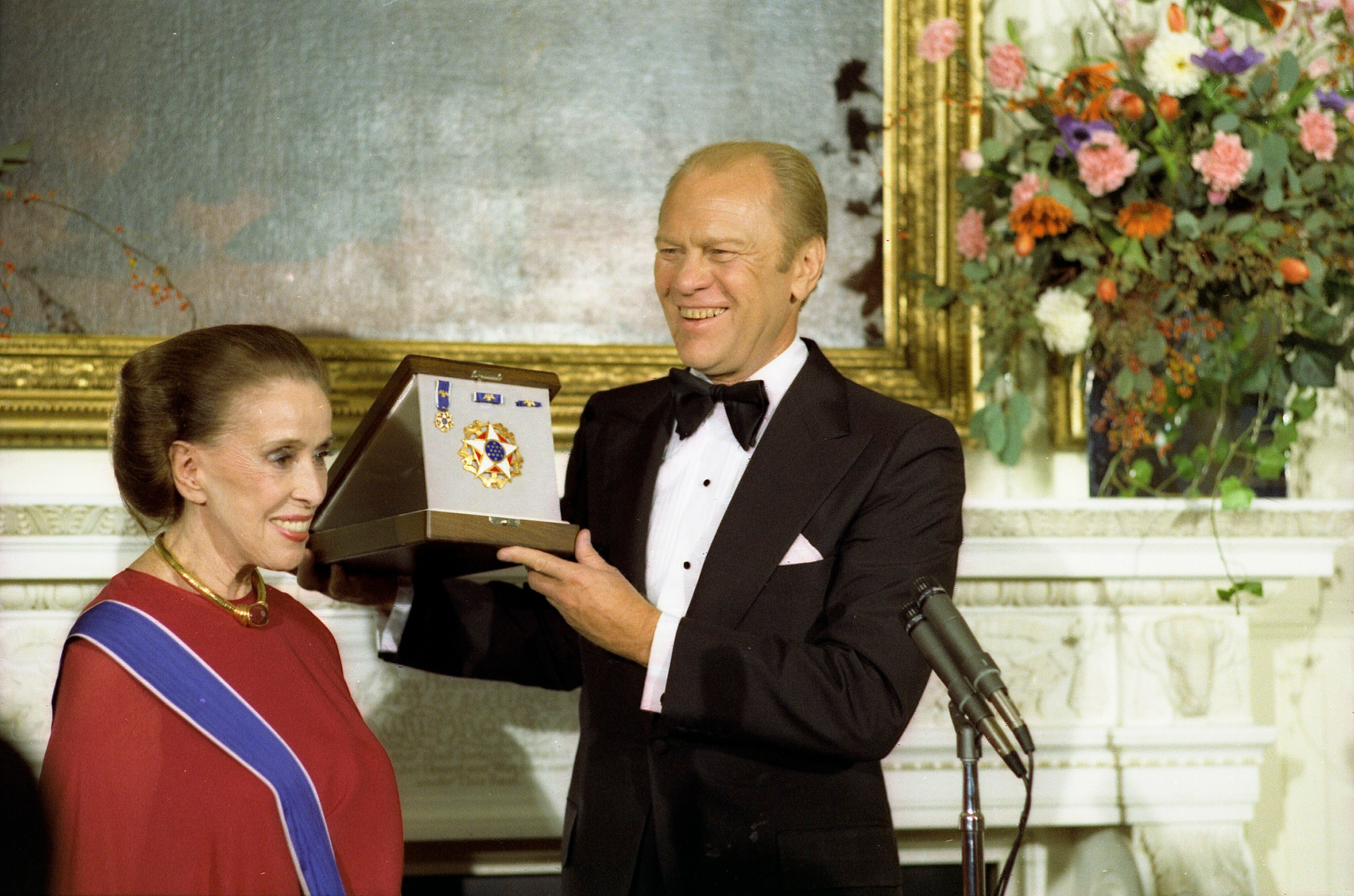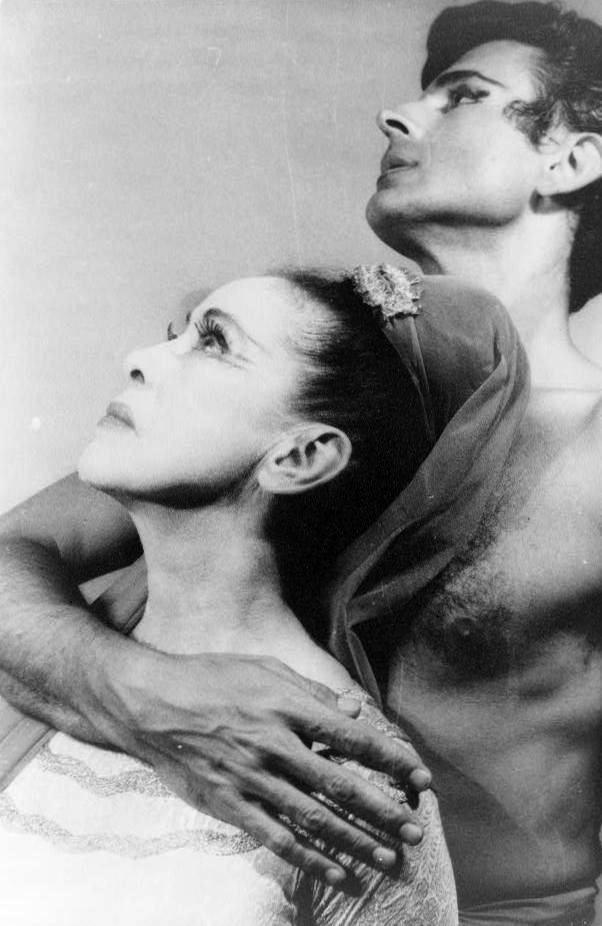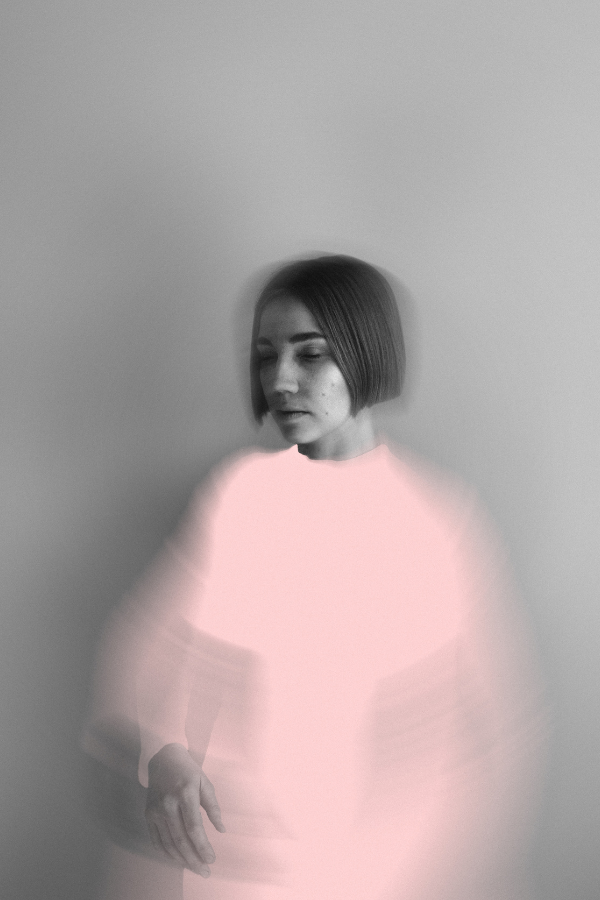

Martha Graham: Exploring the Dancer’s Work, Life, and Legacy
Summary
Reflection Questions
Journal Prompt
Martha Graham, a foundational figure in the evolution of modern dance, profoundly transformed the landscape of this art form with her innovative techniques and expressive choreography. Her career, spanning over seven decades, not only redefined dance but also left an indelible mark on contemporary culture. She drew from intriguing inspirations, founded the Martha Graham Dance Company, and so much more. Graham’s pioneering approach, characterized by movements that articulated the depth of human emotions, has influenced generations of dancers and choreographers. In this article, we celebrate the life, work, and enduring legacy of Martha Graham, whose contributions have irrevocably shaped the contours of modern dance and its resonance in the broader realm of artistic expression.
Martha Graham’s Early Life and Influences
Martha Graham was born in 1894 in Pittsburgh, Pennsylvania, into a family that fostered a deep appreciation for the arts. Her father, George Graham, a doctor specializing in nervous disorders, and her mother, Jane Beers Graham, were both intellectually inclined and provided a nurturing environment.
This familial atmosphere, emphasizing culture and creativity, played a vital role in shaping Martha’s early perceptions of the world. The values and beliefs instilled in her during these formative years laid the groundwork for her future explorations in dance and artistic expression.
Early Influences on Dance Interest


Martha Graham’s interest in dance was cultivated by diverse cultural exposures and personal experiences in her youth. Key among these were the performances and lectures she attended, which introduced her to the world of performing arts. A performance at the Mason Opera House by ballet dancer Ruth St. Denis was particularly inspiring.
The early 20th century was a period of significant artistic upheaval and innovation, and Graham was exposed to these dynamic changes. The influence of these experiences was profound, as they opened her mind to the expressive possibilities of dance, going beyond mere entertainment to become a form of emotional and artistic expression.
Fuel your creative fire & be a part of a supportive community that values how you love to live.
subscribe to our newsletter
Initial Exposure to Dance and Training
Martha Graham’s formal initiation into the world of dance began at a relatively later age than most dancers. She began her dance training at the Denishawn School of Dancing and Related Arts in Los Angeles when she was 22 years old. Founded by Ruth St. Denis and Ted Shawn, two of the early pioneers of modern dance, Denishawn provided Graham with her first structured training in dance and theater.
It was here that she began to understand the basics of movement and performance, although she would later break away from their style. This training period was crucial as it laid the foundation upon which she would build her unique and revolutionary approach to modern dance.
Rise to Prominence


In the early stages of her career, Martha Graham’s performances quickly distinguished her as an innovative force in modern dance. After departing from the Denishawn School in 1923, she moved to New York City, where her exploration of new movement languages began to take form.
Her early works, such as “Lamentation” in 1930, marked a significant departure from traditional dance forms and garnered critical acclaim. These performances were characterized by their emotional intensity and the use of expressive, non-traditional movements. It was during this period that Graham established herself as a pioneering artist, with her performances reflecting a deep exploration of human emotions and experiences.
Unique Style and Departure from Norms
Martha Graham’s style was markedly different from the prevailing dance norms of her time. While ballet and other dance forms emphasized fluidity and external beauty, the Graham technique focused on internal emotions, expressed through movements based on contraction and release.
This approach allowed her to explore a broader spectrum of human emotion and psychological states in her choreography. Her style was also noted for its stark, angular movements, and the use of the entire body to convey meaning, which was a radical shift from the more decorative and narrative styles popular in the early 20th century.
Notable Collaborations and Influences
Martha Graham was a contemporary of greats like Pearl Lang and Paul Taylor. During her rise to prominence, Martha Graham collaborated with several notable artists and intellectuals who significantly influenced her work. One of the most important of these was Louis Horst, her musical director and mentor, who played a crucial role in developing the musical framework for many of her pieces.
Horst’s influence extended beyond music, as he also provided Graham with artistic guidance and support. Additionally, her collaborations with contemporary dance artists, designers, and composers, such as Isamu Noguchi and Aaron Copland, notably in works like “Appalachian Spring,” enriched her productions and contributed to the development of a holistic artistic vision. These collaborations were instrumental in shaping the multidisciplinary nature of her work, integrating dance, music, and visual design.
Major Works and Choreographic Style


Graham danced in a number of important pieces, but Graham choreographed too. Martha Graham’s choreographic repertoire is highlighted by several groundbreaking works, among which “Appalachian Spring” and “Lamentation” are particularly noteworthy. “Appalachian Spring,” created in 1944 to music by Aaron Copland, is celebrated for its exploration of American themes, capturing the spirit of hope and renewal. This piece, with its fluid yet precise movements, showcases Graham’s talent for storytelling through dance.
On the other hand, “Lamentation,” premiered in 1930, represents a stark contrast with its focus on grief and emotional struggle, performed as a solo piece with the dancer enshrouded in a stretchy tube of fabric. This work exemplifies Graham’s ability to convey profound emotions through simple yet powerful movements, leaving a lasting impression on the audience.
Choreographic Style: Contraction and Release
Central to Martha Graham’s choreographic style is the principle of contraction and release, a technique she developed and refined throughout her career. This approach is based on the natural rhythms of breathing, where the act of contracting (inhaling) and releasing (exhaling) is translated into physical movements.
This technique allowed Graham to express a wide range of emotions and ideas through dance, making her choreography resonate with an emotional depth and authenticity. The contraction and release method not only differentiated her style from classical ballet but also gave her dancers a powerful tool to convey psychological and emotional states through their bodies.
Themes and Emotions in Her Dances
Martha Graham’s dances are renowned for their thematic depth and emotional intensity. She explored a variety of themes, including Greek mythology, Americana, and human emotions. Graham’s life and experiences in the dance world were also sources of inspiration. Her works often delved into the complexities of the human experience, ranging from existential struggles to celebrations of life and resilience.
Graham’s choreography was not just about movement but also about storytelling and expressing the depths of human emotion. Her ability to encapsulate complex emotional states and narratives, such as anguish, joy, and perseverance, through movement, set her apart in the world of modern dance.
These themes resonated deeply with audiences, allowing them to connect with the performance on a personal level.
Graham’s Impact on Modern Dance


Martha Graham’s impact on modern dance is profound and transformative. She revolutionized the art form by introducing a new vocabulary of movement that emphasized emotional expression and psychological depth. Her approach broke away from the traditional narratives and forms of ballet, focusing instead on expressing inner feelings. This shift not only altered the aesthetics of dance but also expanded its possibilities as a medium for personal and artistic expression. Graham’s innovations in choreography, including the use of angular movements, floor work, and the contraction and release technique, fundamentally changed how dancers and choreographers approached movement, paving the way for modern dance to evolve into a diverse and dynamic art form.
Contributions to Dance Theory and Education
Martha Graham’s contributions to dance theory and education are significant and lasting. She was a pioneering theorist, articulating principles of movement that were rooted in the exploration of the human body and its capacity for expression. Her emphasis on the psychological aspects of dance led to new ways of thinking about and teaching dance.
Graham founded the Martha Graham School of Contemporary Dance, which became a premier institution for dance education. Through her own dance company, she developed a comprehensive training system for dancers, emphasizing not only physical technique but also artistic and emotional expression. Her school, methodology, and the Martha Graham Center have nurtured countless dancers and choreographers, many of whom have gone on to make their own marks in the world of dance.
Role as Mentor and Teacher
As a mentor and teacher, Martha Graham played a crucial role in shaping the careers of future generations of dancers. Her approach to teaching was holistic, focusing not just on technique but also on encouraging individual artistic expression.
Graham believed in the potential of each dancer to find their unique voice, and she nurtured this through her instruction and guidance. Many of her students became prominent dancers and choreographers, carrying forward her legacy and principles.
Her influence as a mentor extended beyond her own school, as her methods and philosophies on dance and movement became integral to dance education globally. Her legacy as a teacher is characterized by her commitment to unlocking the expressive potential of each dancer, a principle that continues to inspire and influence modern dance education today.
Graham was so influential that critics have compared her modern dance contributions to the work of other icons in the arts and humanities, notably Frank Lloyd Wright and Pablo Picasso.
Challenges and Controversies During Graham’s Career
Throughout her career, Martha Graham encountered several challenges and controversies that tested her resilience and artistic vision. A significant challenge was the initial resistance to her innovative style, which diverged radically from traditional dance forms.
Her unconventional movements and thematic choices, often exploring complex psychological and social issues, were at times met with skepticism and criticism from audiences and critics accustomed to more classical forms. Additionally, Graham faced personal challenges, including her struggles with aging and the evolving landscape of modern dance, which sometimes put her at odds with the changing preferences of the public and the dance community.
Controversies also arose from her bold thematic explorations in her choreographies, some of which were deemed provocative or avant-garde for the times.
Impact on Work and Reputation
These challenges and controversies had a profound impact on Martha Graham’s work and reputation. The initial resistance to her style fueled her determination to develop and refine her techniques, reinforcing her status as a trailblazer in modern dance. Her resilience in the face of criticism helped to solidify her influence and legacy in the dance community.
The controversies surrounding her thematic choices brought increased attention to her work, albeit sometimes polarizing. These moments of challenge and controversy also led Graham to push the boundaries of modern dance further, exploring new ideas and themes that would leave a lasting impact on the art form.
Despite the hurdles, Graham’s reputation as a pioneering and influential figure in modern dance remained largely intact, with her contributions continuing to be celebrated and studied long after her passing.
Martha Graham’s Enduring Legacy


Martha Graham’s legacy in the world of dance and beyond is characterized by her enduring influence on the art form. She fundamentally altered the landscape of modern dance through her innovative techniques and expressive choreography.
Influence on Contemporary Dancers and Choreographers
Contemporary dancers and choreographers continue to be profoundly influenced by Martha Graham’s work. The Graham technique, particularly the contraction and release method, has become a staple in modern dance education and performance.
Graham’s emphasis on emotional authenticity and expressive movement has inspired dancers to explore deeper levels of personal and artistic expression. Choreographers have adapted and evolved her techniques, integrating them into diverse styles and contexts. This ongoing influence is a testament to the timeless quality of her work and her visionary approach to dance as a form of personal and artistic expression.
Institutions and Awards in Her Honor
In recognition of Martha Graham’s contributions to dance, several institutions and awards have been established in her honor. The Martha Graham Dance Company, which she founded in 1926 and was preserved by the Graham family, continues to perform her works and develop new ones inspired by her legacy.
The Martha Graham School of Contemporary Dance, established by Graham, remains a premier institution for dance education, perpetuating her teaching and philosophy. Additionally, awards like the Martha Graham Award for Contemporary Dance have been established to recognize a featured dancer or organization who demonstrates excellence and innovation in the field of dance, continuing her legacy of encouraging artistic growth and excellence.
These institutions and awards ensure that her contributions to dance and her pioneering spirit are celebrated and preserved for future generations.
Final Thoughts on Martha Graham’s Life and Legacy of Dance


Martha Graham’s life and work represent a monumental chapter in the history of modern dance. Her innovative techniques, particularly the use of contraction and release, and her emotionally charged choreography, have left an indelible mark on the art form. Graham’s journey from a late-starting dancer to a pioneering choreographer exemplifies a relentless pursuit of artistic expression and innovation. Her legacy, extending beyond her vast repertoire of works, continues to influence contemporary dance and arts education. Future generations of dancers and choreographers can draw inspiration from Graham’s resilience, her willingness to explore and express complex emotions, and her dedication to the continual evolution of her art.
2 Comments
Comments are closed.









Elspeth Macdonald
Such a good topic, and subject! Thank you. Curious who her partner in the photo is? Would live a list of dancers/choreographers she influenced. Did I miss mention of May O’Donnell? — one ofMartha’s principal dancers and a brilliant choreographer herself.